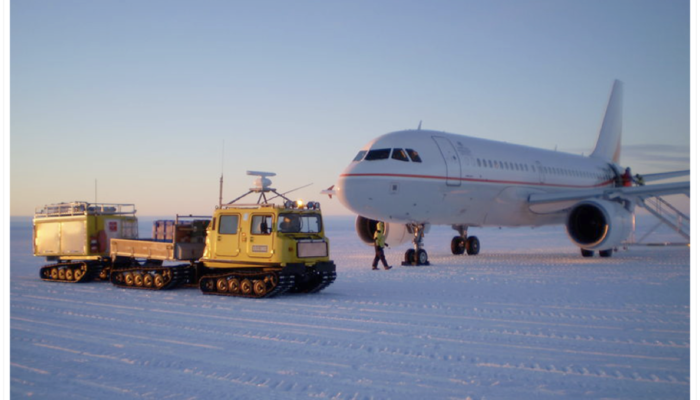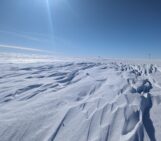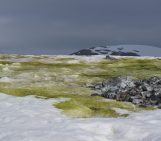
Every time we walk, ski, drive or build upon snow, we’re relying upon the theory of Snow Mechanics; but what is that and why should we care?
Mechanics is the engineering terminology used to describe “the branch of applied mathematics dealing with motion and forces producing motion” (Oxford Languages) or more simply, the study of motion, in our case the motion of snow.
What causes snow to move?

An understanding of snow mechanics is essential for us to understand nad predict avalanche formation and behaviour. Figure credit: Scientif38, Wikimedia Commons (CC BY-SA 3.0).
Generally snow might move for two main reasons: like all geomaterials (soil, clay etc.) it settles or compacts under its own weight, due to gravity, and does so even faster when additional loading is placed upon it.
As snow settles naturally, it gets denser, and over time, it may eventually be compressed sufficiently to become ice.
If it is on a slope however, the snow can fail either in a slow (plastic) manner over time, or by fracturing, in a brittle manner; thus, snow mechanics is crucial to our understanding of the inception and behaviour of avalanches.
Further, snow is a ‘rate-sensitive’ material (as are most things): how quickly any load or force is applied to snow will dictate how it responds.
Why is it important to understand snow mechanics?
As we continue to explore and conduct research in the polar regions, we need to get around by foot, ski, snowmobile, aircraft, vehicle etc. The ability for this locomotion to occur, for the snow to remain trafficable, depends on the snow conditions (temperature, moisture, density, age etc.) and the type of loading that is applied to the snow surface. The complex mechanical behaviour of snow and its propensity to vary temporally and spatially makes the engineering of pavements made from snow such as roads, runways etc. particularly challenging.
These factors must also be considered when seeking to understand the inception and behaviour of avalanches.
The physical characteristics of snow, and thus its potential behaviour under load, can be determined in a laboratory or via in-situ (e.g. penetrometer) tests etc.; these help us understand how snow might behave under certain loading scenarios.

Measuring snow resistance (proxy for strength) using the Cone Penetration Test (CPT) in Antarctica. Photo credit: Adrian McCallum.
The matrix of ice that constitutes snow is called the snow microstructure. Snow microstructure encompasses the configuration of the ice and air spaces within the snow, incorporating density, porosity, specific surface area, curvature, tortuosity (i.e. how twisted the fluid flow paths in the snow microstructure are) and coordination number (number of bonds between ice grains). One good thing about snow (generally) is that it typically gets stronger with time, as bonds between ice grains thicken. But all of this good work could be undone in the presence of water…
Snow mechanics is a fascinating area of the cryosphere that is crucial for us to understand glacial hazards and our continued access to and study of the polar regions.
Further reading
- McCallum, A. B. (2017) “Cone penetration testing (CPT) in Antarctic firn: an introduction to interpretation”, Journal of Glaciology, Vol. 60 (219).
- McClung, D. and Schaerer, P. (1993), The Avalanche Handbook, The Mountaineers, Seattle, Washington.
- Mellor, M. (1964), “Properties of Snow”, Monograph III-A1, US Army Cold Regions Research and Engineering Laboratory, Hanover.
- Mellor, M. (1975), “A Review of Basic Snow Mechanics”, in: “International Symposium on Snow Mechanics”, vol. International Association of Hydrological Sciences Publication 114, International Association of Hydrological Sciences, Grindewald, pp. 251–291.
- Schulson, E. M. (2001), “Brittle failure of ice”, Engineering Fracture Mechanics, 68(17- 18), 1839.
- Shapiro, L. H., Johnson, J. B., Sturm, M. and Blaisdell, G. L. (1997), “Snow Mechanics. Review of the State of Knowledge and Applications”, Report 97-3, US Army Cold Regions Research and Engineering Laboratory, Hanover.
- White, G and McCallum, A. B. (2017) “Review of ice and snow runway pavements”, International Journal of Pavement Research and Technology, Vol. 11 (3).
Edited by Marie Cavitte
 Adrian McCallum is Discipline Lead for Engineering at University of the Sunshine Coast, Australia. He specialises in the in-situ and geophysical assessment of remote-area geomaterials. He tweets as @acmccallum and you can contact him via www.linkedin.com/in/adrianmccallum or email: amccallu@usc.edu.au
Adrian McCallum is Discipline Lead for Engineering at University of the Sunshine Coast, Australia. He specialises in the in-situ and geophysical assessment of remote-area geomaterials. He tweets as @acmccallum and you can contact him via www.linkedin.com/in/adrianmccallum or email: amccallu@usc.edu.au




